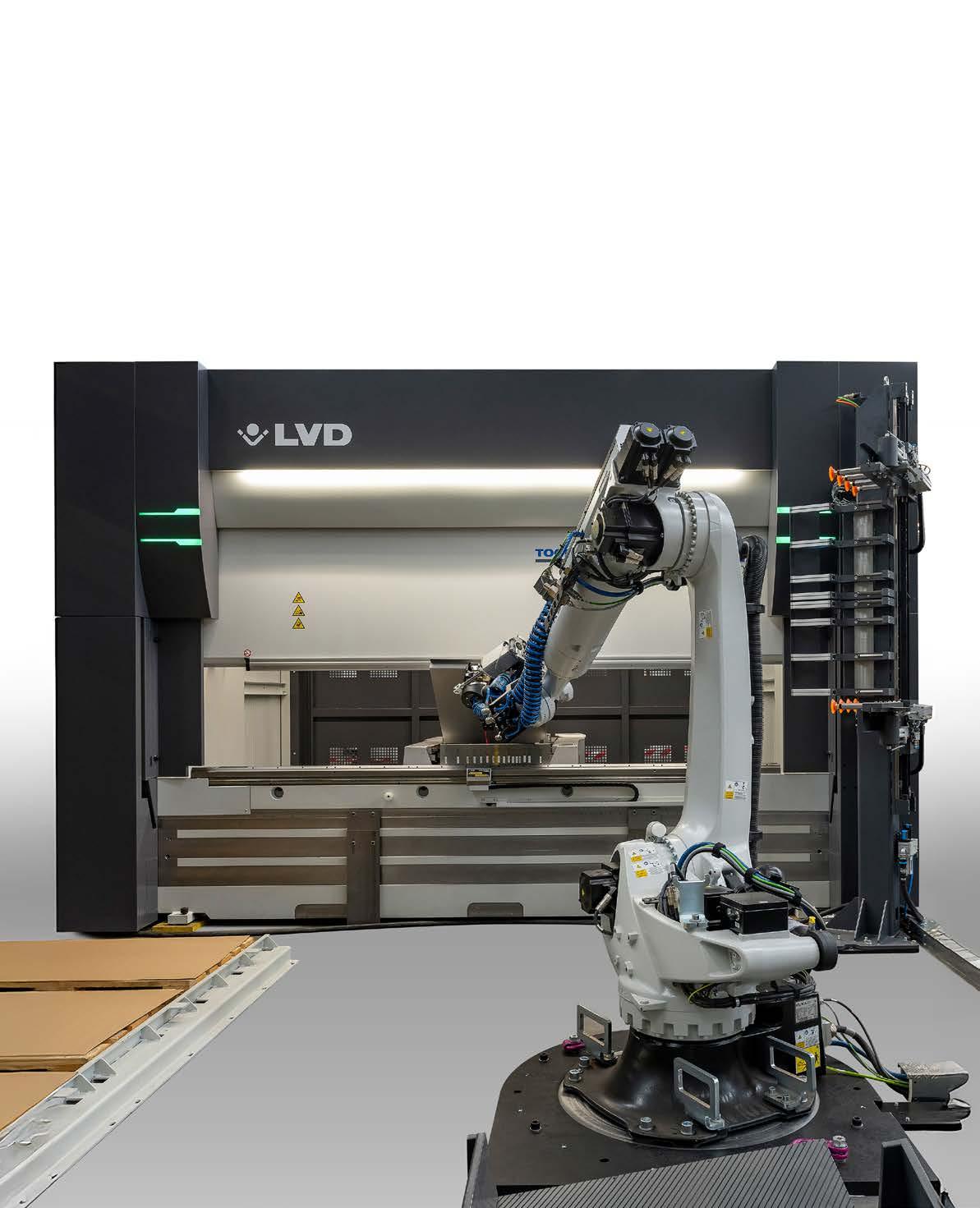
3 minute read
LVD Introduces Configurable Robotic Bending Systems
New bending automation model emphasizes flexibility; User-defined parameters enable highly tailored bending cells
LVD Company nv, a market leader in automated bending solutions for sheet metal fabricators, introduces new Robotic Bending Systems – RBS - in three configurable platforms. These systems form the foundation for fully customized robotic bending cells, with choice of press brake capacity and functionality, input and output stations and style of robot grippers based on a fabricator’s application needs and production demands.
RBS offer the utmost flexibility, ensuring every cell LVD builds is ideally suited for the end user. This makes bending automation more accessible for a wider audience and allows a faster ROI for each system.
Tailored Functionality
The three core platforms are structured as follows:
• RBS 4 is designed for parts up to 600 x 400 mm in size and weighing up to 4 kg. The maximum profile length is 600 mm. The system is compatible with press brakes with a bending length of 1500 or 2000 mm and a capacity of 40 or 50 ton.
• RBS 40 handles parts up to 1600 x 1200 mm, with a maximum weight of 40 kg. The maximum profile length is 2000 mm. The system is compatible with press brakes with a bending length of 2500 or 3000 mm and a capacity of 80, 135, or 220 ton.
• RBS 80 is designed for larger parts up to 3050 x 1250 mm, weighing up to 80 kg. The maximum profile length is 3000 mm. This system works with press brakes offering a bending length of 3000, 4000, or 4200 mm, and a capacity of 135 or 220 ton.
The bending cell configuration starts by defining key parameters across five steps. In Step 1, the part dimensions—length, width, and overall size—are specified, as these determine the required robot payload.
The second step is press brake selection, ranging from an electricdrive Dyna-Press to an automatic tool changing ToolCell, depending on complexity of application, quality requirements and production volume.
The fabricator then defines input source and output method for best material flow choosing input boxes, output pallets, conveyor systems and fences. The last step is gripper selection based on the weight, material properties, shape, and size of parts to be handled. Gripper choices include LVD’s universal gripper, manual gripper, combination gripper for smaller, magnetic parts, and heavy-duty gripper.
Core Features for Reliable, Easy Use
Robotic Bending Systems incorporate core features that ensure reliability and ease of use:
• The Touch-B control operates both press brake and robot using intuitive multi-touch technology.
• LVD’s CADMAN-SIM software automatically programs both press brake and robot, defining all gripper positions, optimizing the bending sequence for collision-free operation. No robot teaching or programming experience is necessary.
• Easy-Form® Laser adaptive bending system assures bend angle accuracy from the first part, ensuring consistent quality in automated production.
• Manual mode option: When automation isn’t needed, the press brake can be used manually.
Strong Product Solution Fit
LVD’s Robotic Bending Systems meet the specific automation goals of each customer, whether for short production runs with frequent changeovers or high-volume batches of complex parts. A user-configured bending cell increases process reliability and speeds the return on investment.
“With RBS, we’re taking a truly customer-centric approach,” says Peter Vandromme, LVD press brake automation sales manager. “Instead of offering off-the-shelf solutions, we configure each cell around the user’s needs - maximizing productivity and efficiency. By making bending automation more flexible, we make it more accessible and ultimately more valuable to our customers.”
In addition to configurable RBS bending systems, LVD continues to offer standardized robotic bending cells: Dyna-Cell, Easy-Cell, and UltiForm for the time being.
For more information visit www.lvdgroup.com










